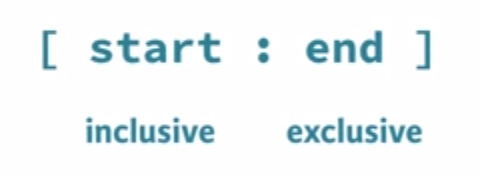Python笔记 #02# Inner workings of lists
源:DataCamp
datacamp 的 DAILY PRACTICE + 日常收集。
List of lists
As a data scientist, you'll often be dealing with a lot of data, and it will make sense to group some of this data.
Instead of creating a flat list containing strings and floats, representing the names and areas of the rooms in your house, you can create a list of lists. The script on the right can already give you an idea.
Don't get confused here: "hallway" is a string, while hall is a variable that represents the float 11.25 you specified earlier.
# area variables (in square meters)
hall = 11.25
kit = 18.0
liv = 20.0
bed = 10.75
bath = 9.50 # house information as list of lists
house = [["hallway", hall],
["kitchen", kit],
["living room", liv],
["bedroom", bed],
["bathroom", bath]] # Print out house
print(house) # Print out the type of house
print(type(house))
Subset and conquer
一个元素毫无疑问也是一个子集,因此不论是取一段或者随机访问一个元素都叫做 subsetting
# Create the areas list
areas = ["hallway", 11.25, "kitchen", 18.0, "living room", 20.0, "bedroom", 10.75, "bathroom", 9.50] # Print out second element from areas
print(areas[1]) # Print out last element from areas
print(areas[-1]) # Print out the area of the living room
print(areas[5])
#Subset and calculate
# Create the areas list
areas = ["hallway", 11.25, "kitchen", 18.0, "living room", 20.0, "bedroom", 10.75, "bathroom", 9.50] # Sum of kitchen and bedroom area: eat_sleep_area
eat_sleep_area = areas[3] + areas[-3] # Print the variable eat_sleep_area
print(eat_sleep_area)
Slicing and dicing

Selecting single values from a list is just one part of the story. It's also possible to slice your list, which means selecting multiple elements from your list. Use the following syntax:
my_list[start:end]
The start index will be included, while the end index is not.
# Create the areas list
areas = ["hallway", 11.25, "kitchen", 18.0, "living room", 20.0, "bedroom", 10.75, "bathroom", 9.50] # Use slicing to create downstairs
downstairs = areas[0:6] # Use slicing to create upstairs
upstairs = areas[6:10] # Print out downstairs and upstairs
print(downstairs)
print(upstairs)
However, it's also possible not to specify these indexes. If you don't specify the begin index, Python figures out that you want to start your slice at the beginning of your list. If you don't specify the end index, the slice will go all the way to the last element of your list.
# Create the areas list
areas = ["hallway", 11.25, "kitchen", 18.0, "living room", 20.0, "bedroom", 10.75, "bathroom", 9.50] # Alternative slicing to create downstairs
downstairs = areas[:6] # Alternative slicing to create upstairs
upstairs = areas[6:]
List Manipulation
1、反向选就不用考虑 0 了,数到几就是几
2、如下操作也可以增加元素
In [3]: x
Out[3]: ['a', 'b', 's', 't']
In [4]: x[2:] = ["s", "t", "hi"]
In [5]: x
Out[5]: ['a', 'b', 's', 't', 'hi']
Extend a list
# Create the areas list and make some changes
areas = ["hallway", 11.25, "kitchen", 18.0, "chill zone", 20.0,
"bedroom", 10.75, "bathroom", 10.50] # Add poolhouse data to areas, new list is areas_1
areas_1 = areas + ["poolhouse", 24.5] # Add garage data to areas_1, new list is areas_2
areas_2 = areas_1 + ["garage", 15.45]
Delete list elements
del(areas[-4:-2])
Inner workings of lists
Change the second command, that creates the variable areas_copy, such that areas_copy is an explicit copy of areas
# Create list areas
areas = [11.25, 18.0, 20.0, 10.75, 9.50] # Create areas_copy
# areas_copy = areas
areas_copy = list(areas) # Change areas_copy
areas_copy[0] = 5.0 # Print areas
print(areas)
areas_copy = areas[:] 也是可以的!
Python笔记 #02# Inner workings of lists的更多相关文章
- 我的Python笔记02
声明:本文整理借鉴金角大王的Python之路,Day2 - Python基础2,仅供本人学习使用!!! 本节内容 列表.元组操作 字符串操作 字典操作 集合操作 文件操作 字符编码与转码 1. 列表. ...
- python笔记02:列表与元素
本章将引入一个新的概念:数据结构.数据结构是通过某种方式(例如对元素进行编号)组织在一起的数据元素的集合.这些数据元素可以是数字或者字符,甚至可以是其他数据结构.在python中,最基本的数据结构是序 ...
- python笔记02
day02笔记记录 一.今日摘要 循环.字符串格式化.运算符.编码.博客. 二.内容回顾 (一)计算机基础 计算机由硬件和软件组成.传统计算机的硬件一般有输入单元.输出单元,算数逻辑单元.控制单元及记 ...
- python笔记-02
Python基础知识 —————————————— A,B,先把A乘以3,然后加上B,最后在加上列表A A = [1, 2, 3, 4, 5, 6] 赋值 B = [1, 2, 3] 变量 定义一个变 ...
- Python学习02 列表 List
Python学习02 列表 List Python列表 List Python中的列表(List)用逗号分隔,方括号包围(comma-separated values (items) between ...
- python笔记 - day6
python笔记 - day6 参考: http://www.cnblogs.com/wupeiqi/articles/5501365.html 大纲: 利用递归,实现阶乘: Python反射 pyt ...
- guxh的python笔记一:数据类型
1,基本概念 1.1,数据类型 基本数据类型:字符串,数字,布尔等 引用数据类型:相对不可变(元组),可变(列表,字典,集合等) 基本数据类型存放实际值,引用数据类型存放对象的地址(即引用) ==:判 ...
- python笔记-1(import导入、time/datetime/random/os/sys模块)
python笔记-6(import导入.time/datetime/random/os/sys模块) 一.了解模块导入的基本知识 此部分此处不展开细说import导入,仅写几个点目前的认知即可.其 ...
- 机器学习实战(Machine Learning in Action)学习笔记————02.k-邻近算法(KNN)
机器学习实战(Machine Learning in Action)学习笔记————02.k-邻近算法(KNN) 关键字:邻近算法(kNN: k Nearest Neighbors).python.源 ...
随机推荐
- Windows 下Hadoop的环境变量配置
一.安装JDK 1.下载路径:http://www.oracle.com/technetwork/java/javase/downloads/index.html 2.安装到C:\Java\jdk1. ...
- Go基础---->go的第一个程序
今天我们学习搭建一个学习go语言的开发环境. Go语言 一.下载go 下载地址:https://golang.org/dl/ 校验下载,在命令行输入go version 二.编写第一个hello wo ...
- gulp报错160
gulp报错: 这种提示,说明端口被占用,并且要改端口号,首先,我需要把Apache服务器关掉, 然后在gulpfile.js里: 把8080的端口号加进去.就解决了
- C++中,将单精度浮点数转换成2进制数
在C++里,实数(float)是用四个字节即三十二位二进制位来存储的.其中有1位符号位,8位指数位和23位有效数字位.实际上有效数字位是24位,因为第一位有效数字总是"1",不必存 ...
- 设计模式——抽象工厂模式
Abstract Factory模式,即抽象工厂模式,该模式要求Factory类为抽象的,并且里面的生产出来的产品也是抽象的! 这里需要着重说的一点就是,抽象类和抽象方法的作用--规范了子类的实现,以 ...
- Sqoop简介及使用
一.Sqoop概述 1)官网 http://sqoop.apache.org/ 2)场景 传统型缺点,分布式存储.把传统型数据库数据迁移. Apache Sqoop(TM)是一种用于在Apache H ...
- 解决hung_task_timeout_secs问题【方法待校验】
问题描述: kernel: "echo 0 > /proc/sys/kernel/hung_task_timeout_secs" disables this messag ...
- 002-java语言基础
一.安装卸载 卸载:控制面板 安装:下载对应版本 注意1.安装路径→尽量不要有空格和汉字 注意2.安装之后,jre可以不用安装,jdk中含有 二.环境变量 环境变量:理解,一些快捷路径.方便快速查找应 ...
- APICloud常用方式
新打开一个窗口: api.openWin({ name: 'unlogin', url: 'widget://html/unlogin.html', pageParam: { } }); 新打开一个F ...
- LVS-DR 配置测试
LVS Lvs体系结构 Lvs工作模式(3种) NAT-网络地址转换模式 当用户请求到达调度器时,调度器将请求报文的目标地址(即虚拟IP地址)改写成选定的Real Server地址,同时报文的目标端口 ...
